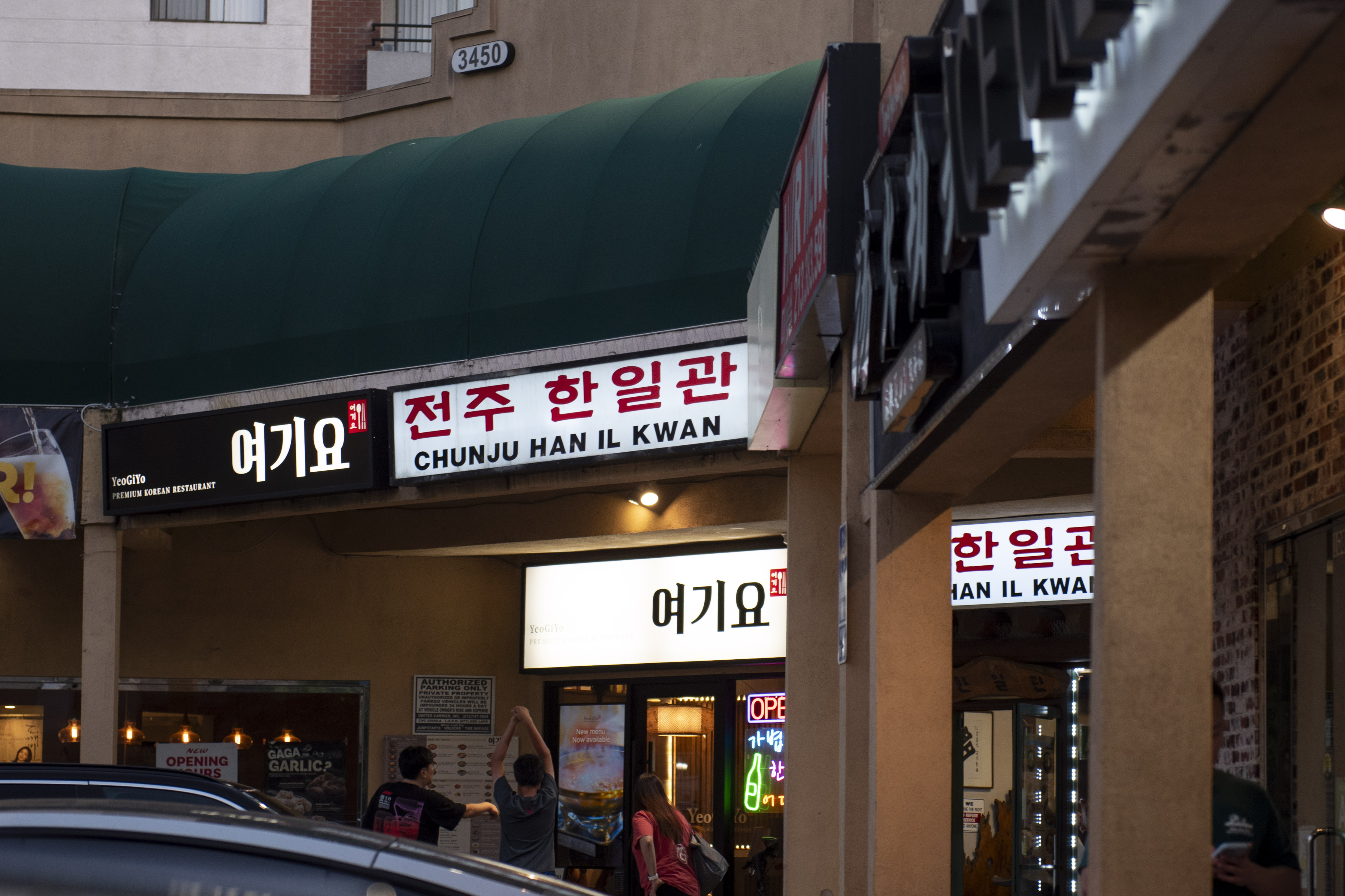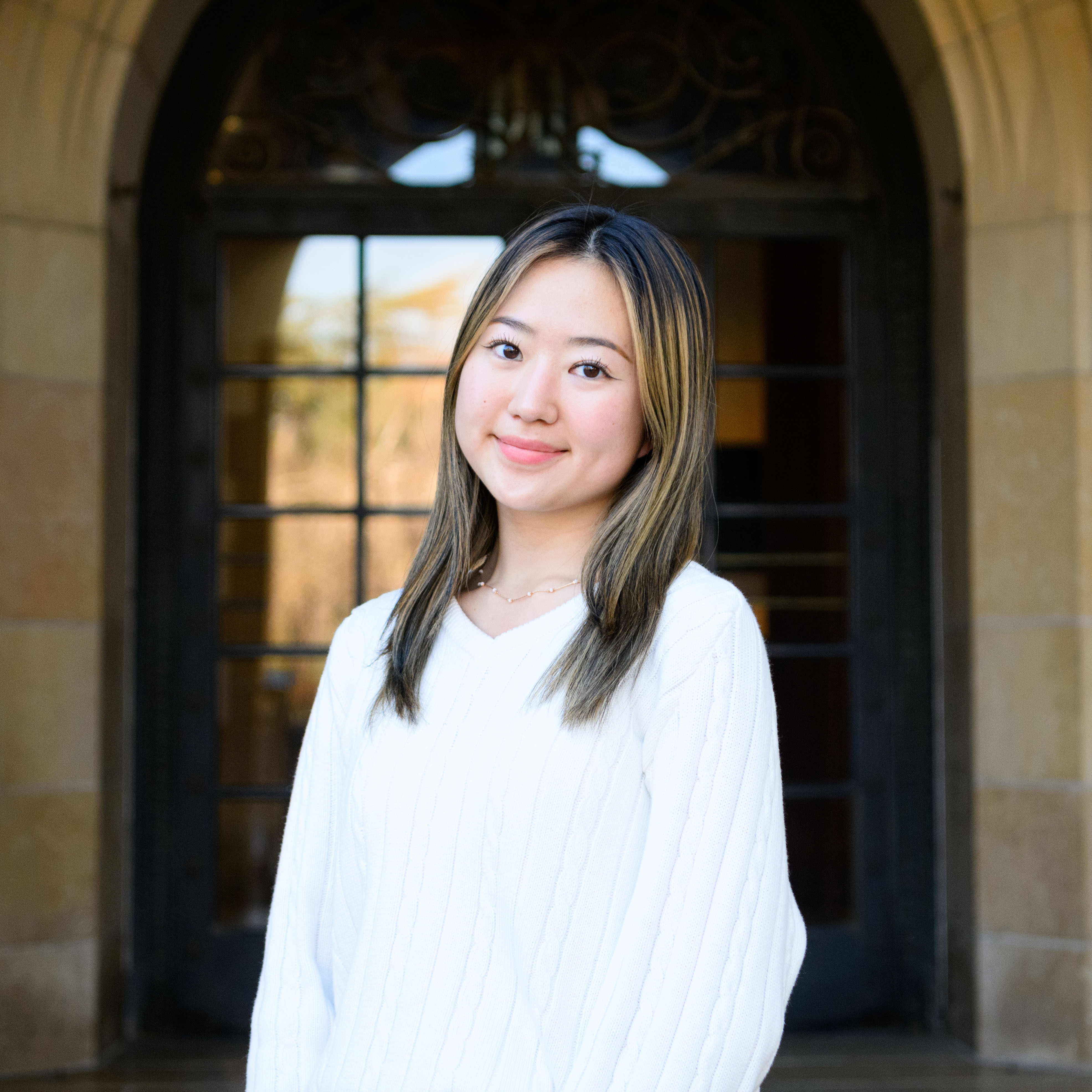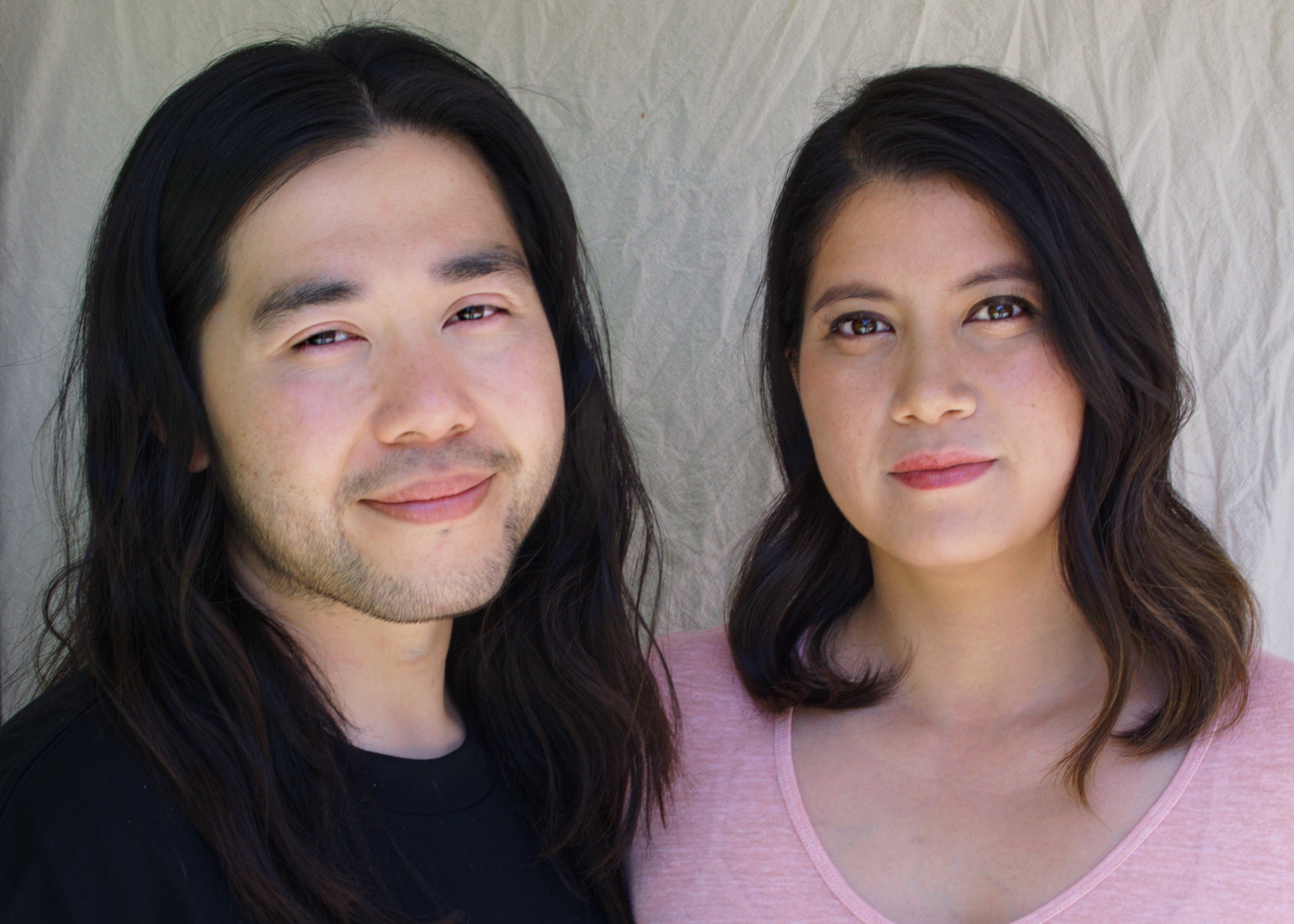The changing landscape of Asian American businesses in the US

Korean restaurant Chunju Han-il Kwan, located in the innermost corner of a strip plaza in Koreatown, is one of hundreds of Asian-owned businesses in the area. (Nicolas Greamo/Daily Bruin senior staff)

By Alicia Park
May 14, 2025 10:44 p.m.
This post was updated May 15 at 10:43 p.m.
Audri Chang’s curly, silver hair and thick, black glasses are unmistakable as the 71-year-old restaurant owner shuffles between rustic tables, balancing platters of steaming food and exchanging friendly small talk with customers.
Koreatown eatery Chunju Han-il Kwan has been serving traditional Korean dishes since Chang first opened its doors in 1992, back when she said there weren’t enough streetlights or people in the area for her to walk around after dark. Now, Koreatown is one of the most densely populated neighborhoods in Los Angeles, boasting more than 700 restaurants, 3,000 businesses and a vibrant nightlife scene.
According to the United States Small Business Administration, Chang’s restaurant is one of 3 million Asian American-owned businesses that employed a total of 5.2 million people in the U.S. last year. The U.S. Census Bureau estimates the number of Asian-owned businesses in the U.S. has doubled in the last two decades, mirroring the growth of the Asian American population in the U.S., which has doubled since 2000 to 25 million in 2023. This growth, as well as the highest concentration of this population residing in California and LA, have benefited businesses like Chang’s.
But those numbers don’t paint the full picture.
Only half of the restaurant’s customers are Korean, Chang said in an interview conducted in Korean, adding that business started booming around 10 years ago thanks to a flood of non-Korean customers.
That sudden surge in sales can in part be attributed to shifts and trends in American popular culture in the last decade, UCLA Anderson School of Management professor Christopher Tang said. From Korean artist PSY’s viral song “Gangnam Style” in 2012 being the first YouTube video to ever reach 1 billion views to 2018 movie “Crazy Rich Asians” becoming the highest-grossing romantic comedy of the 2010s, Asian culture began to reach new heights globally.
For Jeremy Tu, a UCLA alumnus and founder of matcha drink chain Junbi, the growing Asian representation in American popular culture manifested most visibly in the frozen food sections of American grocery chains such as Whole Foods and Trader Joe’s. Tu said he noticed grocers filling more and more shelf space with pad thai, Korean short ribs and Chinese dumplings, among other Asian dishes and ingredients.
It wasn’t just established American businesses adopting Asian flavors. Asian American owned grocers including H Mart, Patel Brothers and 99 Ranch Market, which started as local, family-owned businesses in the 1980s grew into national chains. Between 2016 and 2020, H Mart launched 26 new stores – the largest expansion in its history – which helped acquire its now-30% non-Asian customer base, according to Bloomberg.
Winning over non-Asian customers wasn’t an overnight success, though. Before Junbi was formally launched in 2017, Tu said he was a vendor at farmers market Smorgasburg where he tested his matcha drink creations and got real-time feedback from customers.
“‘What is this green thing I’m drinking, and why does it taste like wheatgrass?’” Tu said, imitating the initial reactions he received from farmers market patrons. “The feedback we were getting was, ‘Oh wow, we have a pretty big challenge ahead of us because we need to explain to them what this product is.’”
The feedback prompted Tu to develop drinks mixed with familiar flavors such as strawberry and vanilla to ease customers’ palates into the unfamiliar matcha flavor – a business strategy that Tu said grew Junbi from a small tent to 11 stores across the country, including one in Westwood.
Businesses offering these flavors – whether fusion or authentic – are often concentrated in LA’s dozens of ethnic enclaves, from Koreatown to Little Ethiopia.
“Tourists, and even locals, … want to eat different foods. They want to be exposed to different people,” Brady Collins, an associate professor of political science at Cal Poly Pomona, said. “LA realized it could take advantage of the development of ethnic enclaves by promoting them and branding the city as this melting pot of different communities.”

Ethnic enclaves – which feature high concentrations of numerous ethnic groups and immigrant-owned businesses – are home to countless local establishments that contribute to LA’s cosmopolitan personality. Despite their cultural appeal and growing popularity, Collins said these places remain vulnerable.
For instance, the U.S. Census Bureau estimates more than half of Koreatown residents are immigrants, and nearly 23% of the neighborhood’s population sits under the poverty line, above LA county’s 13.7% poverty rate. Ethnic minorities – primarily Latino and Asian groups – make up around 80% of Koreatown’s population, according to The Karsh Family Social Service Center.
Chang said the most difficult part of being a business owner has been managing the cultural differences and language barriers not only externally but also among her employees, many of whom are immigrants who do not speak fluent English or Korean. She said she still struggles with employee affairs even after 33 years, from teaching cooks how to follow her recipes perfectly to resolving conflicts.
“It is challenging to work somewhere where there might be two or sometimes three languages spoken in the kitchen and in the break room,” Collins said, reflecting on the research he conducted as a director for Koreatown Workers Immigrant Alliance. “It’s harder for workers to organize themselves and address workplace issues that they all experience because they are having trouble communicating with each other and relating to one another.”
Tu, now in his 40s, also said cultural differences and misunderstandings – especially generational differences between himself and Generation Z workers – is a significant issue he faces as a business owner. In fact, more than half of all employees in the U.S. restaurant and food service industry are ethnic minorities, and a majority of waitstaff, food preparers and counter workers fall in the 18 to 24 age group, according to the National Restaurant Association. The U.S. Census Bureau estimates almost 20% of all American food service businesses are Asian-owned.
While employee relations have been a persisting internal matter, several external issues have become increasingly relevant for business owners like Chang and Tu. For one, U.S. Immigration and Customs Enforcement raids have sparked fear across LA, especially for undocumented individuals who work for ethnic businesses, Collins said.
“We’re already seeing ICE and other immigration enforcement agencies starting to raid a lot of these immigrant communities and these workplaces, and so a lot of workers I know are scared to go to work and are calling off days more,” Collins added.
In current economic conditions, businesses may not be able to afford to lose employees.
Chang said recent economic conditions compounded by the presidential administration’s plans on increasing tariffs on imports have burdened her business. Despite not raising prices even during the COVID-19 pandemic, she added that she is currently in the process of increasing prices on menu items by $1 to $4.
Thirty percent of Chunju Han-il Kwan’s current business expenses go to ingredient costs, but tariffs will raise that to 50% of its total expenses, as a majority of her ingredients are imported from Korea, Mexico and China, Chang said. Considering the rising costs of taxes, employee wages, rent and other expenses due to inflation, she added that she will no longer be able to maintain the business if she doesn’t raise the prices customers pay.
“If you look at a lot of Chinatown merchandise that they sell, virtually all of them are imported. If it’s not imported, why would people go to Chinatown to buy things?” said Tang, who has studied global supply chains for 40 years. “Even if you shop at 99 Ranch Market, most of the items are imported.”
Tang added that increased prices from tariffs will push people to buy cheaper mainstream substitutes, driving sales away from both local and national businesses that rely on imported goods, especially hurting ethnic enclaves – including the people, culture and dreams holding those communities together.
Chang, who immigrated to the U.S. in 1990 to chase the American dream, said she worked long nights as a server before saving up the money and courage to open Chunju Han-il Kwan – which has been open 13 hours a day, seven days a week for 33 years now.
“We have so many regulars – even though I’m getting old, I can’t retire right now,” Chang said. “I’m going to keep working hard with my team until I physically cannot anymore, even with the difficult economic realities.”




